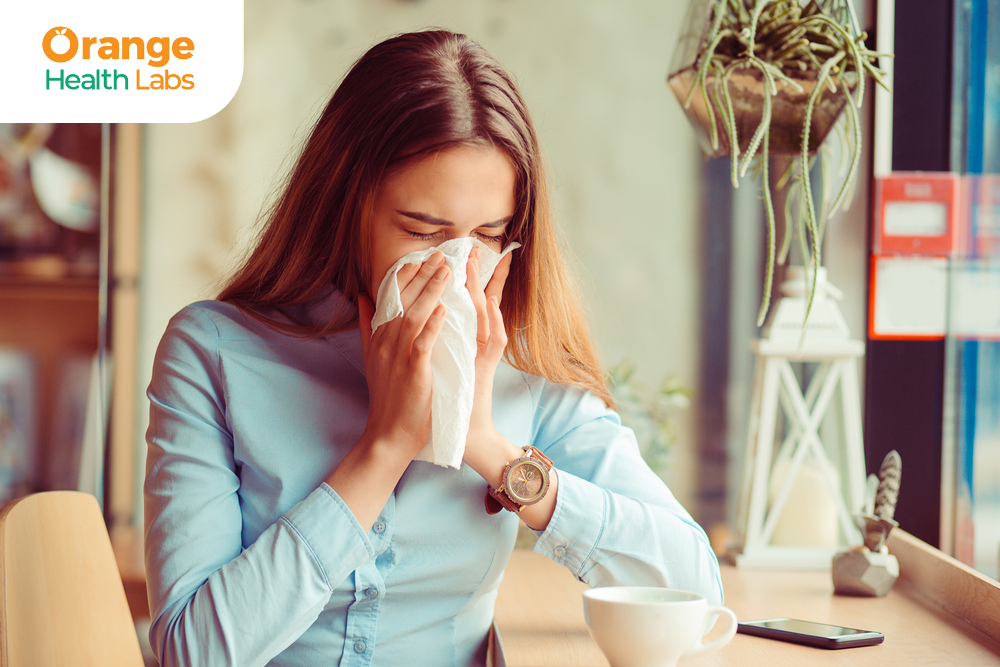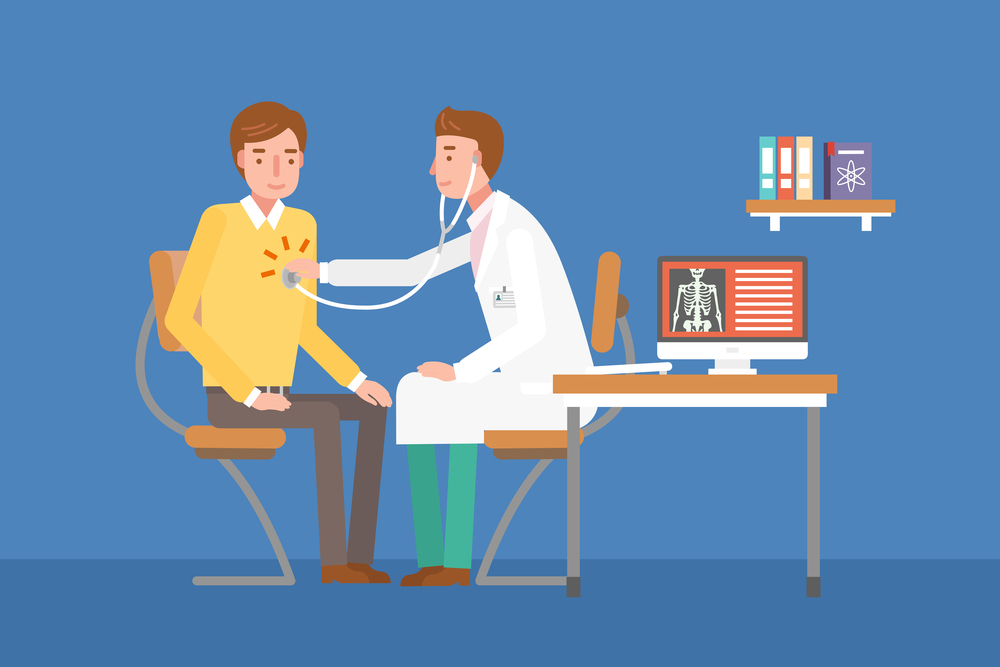Search for tests or checkups
Support10 Symptoms of Sexually Transmitted Diseases & Their Causes

Every day, over a million cases of sexually transmitted diseases (STDs) are contracted globally, with the majority displaying no symptoms. STDs are infections caused by various bacteria, viruses, or other microorganisms that can be transmitted between individuals through the exchange of bodily fluids such as blood, semen, or vaginal fluids during sexual intercourse, including oral, anal, or genital contact with an infected partner. In this article, we'll walk you through the most common symptoms of STDs, helping you stay informed and prompting you to consider an STD test package if necessary.
Overview of the Types of Pathogens That Cause STDs
Here's an overview of the types of pathogens that are responsible for causing STDs:
- Viruses: STDs are caused by viruses such as herpes simplex virus, human immunodeficiency virus (HIV), human papillomavirus (HPV), cytomegalovirus (CMV), Zika virus, and hepatitis B virus (HBV).
- Bacteria: Bacteria such as Treponema pallidum and Neisseria gonorrhoeae cause STDs such as syphilis and gonorrhoea, respectively.
- Parasites: STDs caused by parasites may involve organisms like Trichomonas vaginalis, or they can be transmitted through insects like scabies mites or crab lice.
Importance of Recognising STD Symptoms
STDs may not show symptoms initially, and when they do, they can often be unclear. Symptoms, if they appear, often manifest in the genital area, although they can also affect other parts of the body. Therefore, regular testing is crucial for detecting and treating STDs to prevent any complications. It's advisable to undergo annual testing for STDs. For those with multiple sexual partners, more frequent testing, such as every 3 to 6 months, is recommended. It's important to consult with a doctor to establish a testing schedule tailored to your circumstances.
Common Symptoms of STDs
Here are some common symptoms of STDs to watch out for:
- Bumps, sores, or warts around your genital area, mouth, or anus. For instance, genital herpes often causes sores on the lips, while trichomoniasis might lead to soreness after urination. Syphilis can also result in sores on the genitals and on the palms of your hands or soles of your feet, while HPV leads to genital warts.
- Pain during urination or having to urinate frequently. For example, trichomoniasis often causes a burning sensation after urination.
- Men may notice a discharge from their penis, while women might experience vaginal discharge that has an unusual odour, causes irritation, or differs in colour or amount from what is typical. STDs like chlamydia, gonorrhoea, and trichomoniasis can cause mild discharge.
- Vaginal bleeding outside of your regular menstrual cycle. For instance, chlamydia may cause vaginal bleeding (between periods) or anal bleeding (after anal sex).
- Discomfort or pain during sexual intercourse. Engaging in anal sex if an individual has chlamydia may result in pain. Similarly, trichomoniasis can make sex unpleasant.
- Swelling or intense itching around your genital area. For instance, chlamydia infection may lead to swollen and painful lymph nodes in the groin, pelvis, or rectum.
- Pain around the pelvis. For example, chlamydia infection may cause pain in the lower belly, while hepatitis B virus (HBV) infection can lead to abdominal pain.
- General aches, pains, fever, and chills. For instance, symptoms such as fever, headache, and muscle aches are commonly seen in cases of HBV infection.
- A rash on the skin. In the case of syphilis, the rash in later stages can appear as rough, red, or reddish-brown spots.
- Other symptoms of STDs include weight loss, diarrhoea (associated with HBV), night sweats, and yellowing of the skin and whites of the eyes (symptoms also linked to HBV).
Risk Factors for Contracting STDs
Here are some factors that increase the risk of contracting STDs:
- Engaging in unprotected sexual activities (without using barrier methods such as condoms) might increase the risk of contracting STDs.
- Having multiple sexual partners raises the likelihood of exposure to STDs.
- Individuals who have had previous episodes of sexually transmitted infections are at higher risk of contracting STDs again.
- Substance misuse, such as having alcohol, might increase the risk of acquiring STDs.
- Sharing needles while using intravenous drugs significantly heightens the risk of transmitting STDs.
- Young individuals, particularly between the ages of 15 and 24, are at increased risk of STDs.
- Sexual assault is associated with an increased risk of STDs.
Transmission From Mothers to Infants
STDs can also spread through breastfeeding or from an infected mother to her child during pregnancy or childbirth. STDs can pose complications during pregnancy and could lead to severe effects on both the mother and the developing baby. While certain issues like low birth weight may become evident at birth, others might remain undetected until months or even years later. Therefore, it is crucial to undergo testing and treatment for STDs during pregnancy to prevent potential health complications for both the mother and the baby. Initiating medical care early in pregnancy enhances the health outcomes for the mother and the unborn child.
Complications of Untreated STDs
STDs, if untreated, can have lifelong complications. Some common consequences include:
- Increased risk of spreading STDs to sexual partners.
- HIV may progress to acquired immunodeficiency virus (AIDS), a severe immunocompromised condition.
- Syphilis can cause organ damage, affect the nervous system, and lead to infections in a developing foetus.
- Infertility is a major devastating complication of STDs.
- In men, complications include:
- Swollen and painful testicles
- Urethral and prostate infections
- In women, specific complications include:
- Ectopic pregnancy
- Pelvic inflammatory disease, which can result in uterine damage and infertility
- Chronic pelvic pain
Additional Preventive Measures
Below are some additional precautions you can implement to protect yourself from STDs.
- It is important to note that lack of communication due to stigma or shame about having an STD can also contribute to the spread of infections. Therefore, open and honest communication with sexual partners, along with regular testing and consistent use of protection, are crucial in reducing the risk of STD transmission.
- Men may consider circumcision as a preventive measure. Clinical trial data indicates that circumcision can decrease a male's risk of getting HIV by 50-60% during contact with female partners who are HIV-positive.
- You can consider taking pre-exposure prophylaxis (PrEP), which involves taking medication to prevent HIV transmission. PrEP is known to be highly effective in reducing the risk of HIV (around 99%) when taken as directed.
Book a STD test Packages in your city: STD Test Package in Mumbai | STD Test Package in Bangalore | STD Test Package in Delhi | STD Test Package in Hyderabad | STD Test Package in Noida | STD Test Package in Gurgaon | STD Test Package in Faridabad
Conclusion
Understanding the causes, risk factors and prevention strategies for STDs is crucial for maintaining sexual health. Individuals must prioritise their sexual well-being by booking an STD test package for early detection. A comprehensive STD test package includes screening tests for herpes, hepatitis B and C, chlamydia, HIV, gonorrhoea, and syphilis, ensuring a thorough assessment. By taking proactive steps and getting tested, individuals can protect themselves and their partners from potential health risks associated with STDs.

Understanding Seasonal Allergies (Hay Fever): Causes, Symptoms and Diagnosis

The Connection Between Full Body Health and Immune Function
